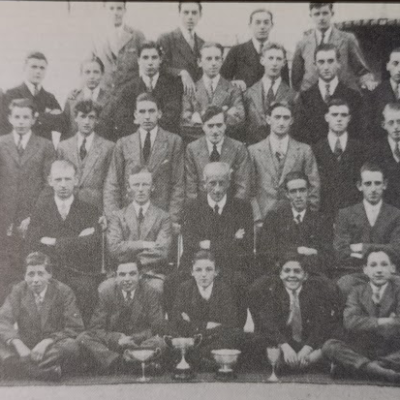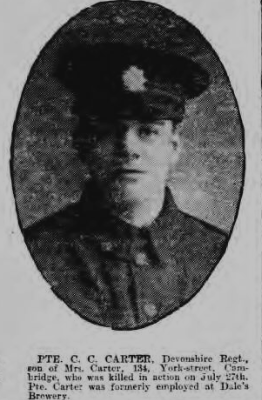Search by topic
- archaeology
- Building of Local Interest
- charity
- church
- crime
- dressmaker
- fire
- Great Eastern Railway
- Listed building
- Mapping Relief
- medieval
- oral history
- poverty
- Public House
- Rattee & Kett
- Religious House
- Roman
- scholar
- school
- Then and Now
- tudor
- women
- work
- world war one
- world war two
Search by text
6 York Street
History of 6 York Street
1881-1895
Head of household between 1881 and 1891 is Thomas Newman. He was born on the 14th August 1854, the son of brick maker, and he grew up on Coldham’s Lane and Newmarket Road. Thomas married Elizabeth Ann Germain in 1874.
In 1881 Thomas is 26 and a labourer in brick yard. He and Elizabeth have had four children. John Henry is 5, George William is 3, Mary Elizabeth is 2 and Harry is just 8 months old. Elizabeth’s brother, Henry German, is living with the family. He is employed as a journeyman baker.
Henry is still with the Newman family on the 1891 census and is no longer a journeyman. Thomas and Elizabeth have four more children. Lilly is 7, Kate is 5, Ernest is 4 and Grace is 7 weeks old.
John Henry moved to Derby where he worked for a Tram Company. During World War 1 he enlisted with the 18th Battalion of the Yorkshire Regiment where he was placed on Reserve. On the 5th October 1918 he was called up, but refused the order. The Derbyshire Advertiser & Journal reported that “he considered human life sacred, and as an international socialist he absolutely refused to take up arms.” The Army sentenced him to “112 days imprisonment with hard labour” as he had “disobeyed a lawful command given by a superior officer”.
Mary Elizabeth worked as a Domestic Servant at Lyndwode House on Lyndwode Road before marrying Joseph Pollard in 1902. Joseph spent some of his childhood at 14 Ainsworth Street and was living with his family at 116 Norfolk Street at the time of his marriage.
Harry became a General Shop Keeper and lived for a time at 148 High Street in Old Chesterton with his wife and young sons.
In 1901 Lilly is working as a Domestic Servant for Upendra Dutt and his family at Palm Villa, 25 Mill Road.
Electoral registers record the Newman family here until 1895. By the time of the 1901 Census the family are living at 10 Beche Road. There are two more children, 8 year old Rosie and 6 year old Violet. The 1939 register shows that Rosie (now married to Bertie Breadman) was born in 1892, so lived at 6 York Street when she was very small. Thomas Newman is widowed by 1939 and living with Rosie and her family in Perowne Street.
1895 – 1912
Daniel Hobbs grew up at 5 Cambridge Place, the son of a labourer. Electoral registers show him moving in to 6 York Street after the Newman family leave in 1895.
In 1901 Daniel is 33 years old and works as a coppersmith’s assistant. He has been married to Eliza (nee Benton) since 1892. They have four children. Alice Mercy is 8, Robert is 5, Daniel is 2 and baby Annie Adelaide is 1.
By 1911 Eliza is working as a college bedmaker and Daniel is working for the Great Eastern Railway as a labourer. Daughter Alice is doing “house work” and Robert is a jeweller’s errand boy. Daniel and Annie are at school, as is 7 year old Lilly Matilda. The census records that Eliza and Daniel have been married for nineteen years and have had seven children, two of whom have died.
Daniel and his family live here until 1912 when they move to 98 Norfolk Street.
Eliza died in 1917 and is buried in Mill Road Cemetery with her children Annie and Harry (presumably the two children who died and were recorded on the 1911 Census) and also Lilly, who died in 1913 aged 9.
1913:
Walter J Mallows, fitter’s assistant
Sources: 1861, 1871, 1881, 1891, 1901, 1911 UK Census, 1939 Register, Cambridgeshire Electoral Registers, Burgess Rolls and Poll Books (1722-1966), LostCambridge, Derbyshire Advertiser & Journal (11th October 1918), British Army Service Records, Mill Road Cemetery,
Contribute
Do you have any information about the people or places in this article? If so, then please let us know using the Contact page or by emailing capturingcambridge@
License
This work is licensed under CC BY-NC-SA 4.0








